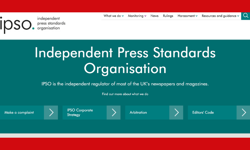The past few years have seen an unprecedented change in the finances of large national newspaper groups. The sharp downturn in advertising revenue against a background of slow decline in circulation numbers has led to a change in the way that newspaper publishers look at their business and in how they allocate marketing budgets and staff resources.
Initially, given the speed of the downturn, most companies put a freeze on marketing plans. This was inevitable because the marketing budget is the largest uncommitted spend that any senior management has at its disposal. Most other cost reductions such as cutting staff, contributors, or production overheads take time to implement.
However, once the industry had had time to make these further cost reductions, a number of fundamental changes took place.
New blood
In the past eighteen months, Associated Newspapers, News International, Mirror Group, Guardian Newspapers Group and Telegraph Media have changed the person who is responsible for their marketing and promotional spend. This is important as it has meant that a new brief has been set on how the departments are structured and how spend is allocated.
Departments are, by and large, smaller now than they were two years ago. The number of people involved in promotions has reduced and there is a greater emphasis on events, reader ‘clubs’ and home delivery initiatives.
Senior marketing jobs have been filled by a number of people without traditional publishing marketing and promotions backgrounds. Not all of the new outside marketeers have made a difference. Newspaper publishing has different dynamics from most other areas of marketing - its pace, focus on sales and editorial influence is quite unique and there have been a number of notable casualties especially where departments have been completely changed.
However, the outcome has been that the new marketing departments now have personnel with wider experience. Gone are the days when there was a closed ‘list’ of people who could move across magazines and newspapers.
There is also a definite integration with marketing, promotions and circulation departments. Promotional ideas are now debated and evaluated internally – and in most cases the circulation departments will have the final say on the predicted uplift of any particular spend. This is clearly demonstrated where circulation and marketing departments are run by one person and in a number of companies, circulation staff have been promoted to run marketing departments.
In terms of marketing spend - although not all groups have the same brief, there are a number of general observations that can be made.
Change in emphasis
There is less emphasis on maintaining specific circulation figures. In the past, the importance of monthly ABCs meant that many newspapers spent large amounts chasing a specific target circulation often at a very expensive cost. Newspaper marketing had become very tactical because of the relationship between circulation numbers and advertising revenue.
Total spend is down – most budgets have been cut back to levels below those before the downturn in advertising. This has led to a shift away from cover-mounted promotions and a dramatic reduction in the number of free give-aways with every copy - especially CDs, DVDs, supplements, posters and booklets. Those campaigns that have been put in place have been run more cost-effectively by reducing print-runs, content costs, production values and advertising and media spend.
New promotional devices
Another shift in promotional strategy has been towards an increased use of retail pick-up promotions whereby the give-away is collected by the reader at a particular outlet such as Tesco, WH Smith, or Morrisons. This cuts down the number of products that have to be manufactured by up to 80%.
A large number of promotions have run without any external media support – relying on ‘in-paper’ (or in-company) advertising and therefore reducing the media spend.
There has been an increase in promotions with financial incentives for the reader. This has been particularly strong with promotions in the grocery sector with offers such as £5 off £30/£50 when you shop at Tesco or Waitrose or Somerfield. Publishers are able to negotiate media spend against the discounted value or pay a contribution towards the redemption costs. This is a much more cost-effective promotion than having to buy and produce numerous free give-aways. The grocery promotions have achieved some good uplifts in sales.
These financial value offers have also been applied to holiday promotions. These have always been popular but are increasing in prominence and value. Holidays for £9.50 in the UK, £20 in France, or return trips on Eurostar for £59 are a few examples. They offer great value, run over a long period and achieve decent sales increases.
These promotions have also led to a new wave of substantial free product offers whereby the reader collects tokens in return for a high value or cutting-edge product such as digital TV boxes, MP3 players and so on. These offers have the advantage of locking the reader in for a period of time and not just the one-off occasion of a cover-mounted promotion.
However, though there are fewer cover-mounted give-aways, there is still a need to attract readers with product offers and this is now increasingly achieved through ‘Free for every Reader’ offers that allow the reader to pick up a free product at a retailer or by post. This is often successful for fashion items, such as pashminas, when the reader perceives a genuine bargain and thus a short-term sales lift is achieved.
Locking readers in
By far the biggest change in newspaper marketing has been the concentration on ‘locking readers in’ via subscriptions, newsagent home delivery or direct home delivery. Once readers are locked into these schemes, there is a growing emphasis on readers’ clubs – whereby loyal readers are offered a raft of exclusive offers to keep them subscribing.
The Independent began a readers’ club in 2009 and the Guardian is starting in 2010 but it is the Times that has spent heavily on its readers’ club, ‘Times Plus’, which is designed to offer subscribers a whole set of exclusive offers.
There is also a very aggressive marketing campaign in the quality press to get readers to subscribe to up-front subscriptions schemes. Full-page adverts appear each week offering readers gifts such as free magazine subscriptions, or free cinema tickets to readers who subscribe.
In the midmarket, the Daily Mail has invested heavily to get readers to commit to long-term home delivery (via local newsagents) in exchange for Marks & Spencer retail vouchers.
Reader engagement
The other main area of change is ‘reader engagement’ marketing. Sponsorship of events and festivals, exclusive reader evenings, national competitions and awards ceremonies are increasing as newspaper publishers seek to interact with their readers and achieve brand awareness for their papers. New initiatives, such as the Times ‘Spelling Bee’ competition, sit alongside the longer-standing ‘traditional’ relationships, such as the Guardian’s sponsorship of Glastonbury. These events are now being fully exploited to achieve the new set of marketing objectives – be it rewarding loyal readers with exclusive offers, cheaper give-away promotions or cross marketing to databases to grow subscriptions.
Partnership marketing
This brings me on to the newest and potentially largest area of opportunity, partnership marketing. The reduction in marketing spends is not confined solely to newspapers - it has affected many industries. This has started to open up true partnership opportunities whereby newspapers work with brands to mutual benefit, for example the Times with Pizza Express, News of the World with Nails Inc, the Guardian with the British Red Cross, and the Independent with the RSPB. Partnerships are starting to develop whereby content, memberships and marketing are being genuinely jointly developed between companies on an ongoing basis.
It is clear that newspapers have emerged from a very difficult period to concentrate on a more strategic marketing and promotions plan. The expensive tactical and cover-mount activity is being replaced by an emphasis on value and long-term purchase. Newspaper publishers are no longer held hostage by having to run expensive tactical promotions to support monthly ABC figures. They have taken the opportunity to stabilise the sales patterns so that they can invest in more robust marketing and reader benefits.
There will be a bigger investment in subscription and reader benefit promotions as publishers seek to lock readers into longer term purchases. There will also be a bigger investment in reader benefits with exclusive offers for loyal readers, designed to retain subscribers.










